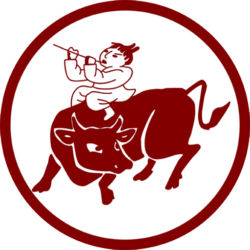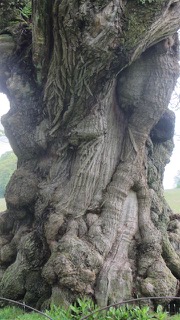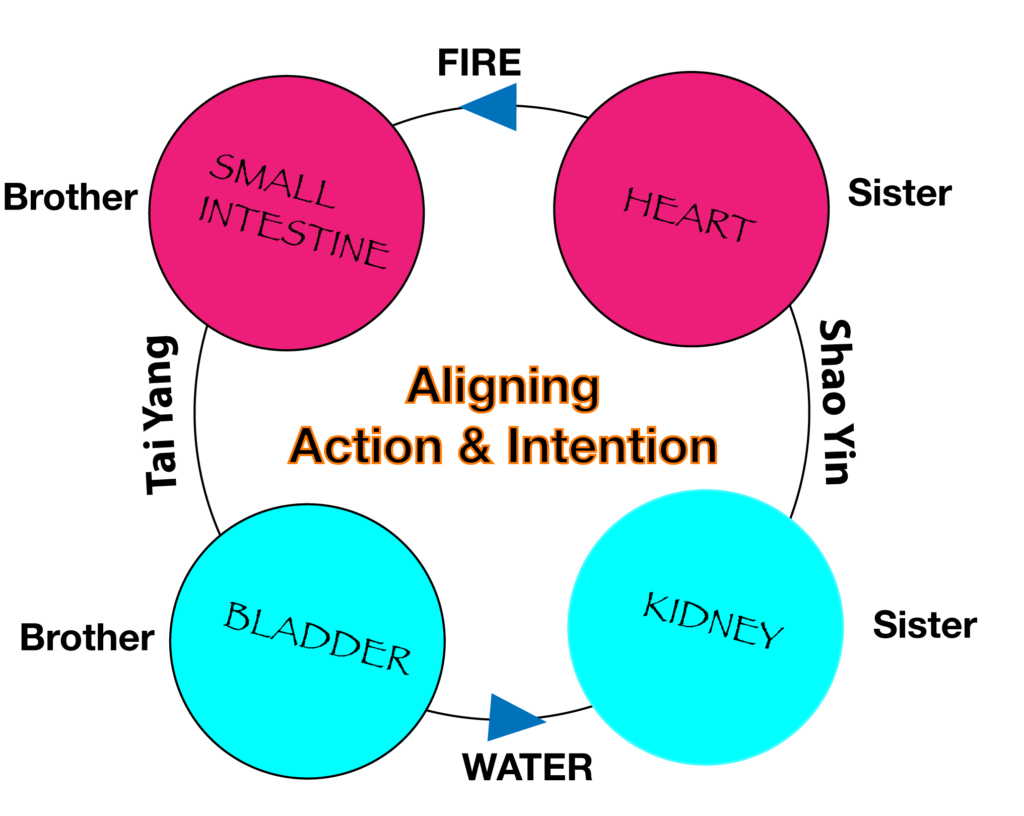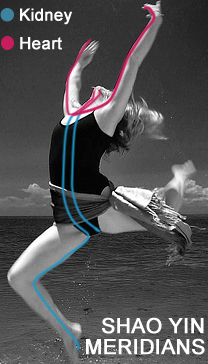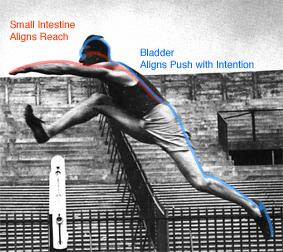Working with the Ming & Xing
By Bill Palmer
It is part of human nature to want things to be better. We imagine what could be and then we search for a way of manifesting that vision. All living beings seek for solutions to their problems; Roberto Kolter has even documented the intelligence of bacteria and slime moulds in collectively overcoming obstacles to find food[1]. But our species takes this capacity to another level through invention for its own sake. This drive to improve everything and solve imaginary problems is both the source of our amazing success in dominating the planet but could also be the seed of our potential extinction.
The negative side of this impulse is that we imagine that any discomfort should be fixable. This gives marketing, religion and politics a hook with which to catch us and control our behaviour. They highlight imperfections and claim that our lives could be improved if we bought their products, believed in their dogma or voted for their party.
But the cost to humanity is that we can easily develop an addiction to their quick fixes and become continually dissatisfied. This insatiable state leads to super-consumerism, perpetually acquiring things that we don’t need, if we can afford it, and yearning after those things if we can’t. In the process we swarm over the planet like locusts, stripping its resources and driving other beings to extinction. As a species, we have a tendency to manifest the state of being that Buddhism calls the Hungry Ghosts[2].
However, this black picture is not the whole story. We also have an enormous capacity for love, for awareness and compassion. My aim in this article is to explore how the act of doing therapy often contributes and amplifies the Hungry Ghost state and to consider how to change the form of the therapy so that it supports our capacity for conscious responsibility.
Liberation is different from Cure
Liberation from dissatisfaction is different from fixing its imagined cause. Picture a bag made from a substance that easily tears. Imagine that it is overfilled with water so that the strain tears the membrane and water starts to spurt out. There are two obvious ways to fix this problem. The first, which we might identify with western medicine, is to put a sticking plaster on the hole – but then the pressure of the water tends to split the skin in another place. The second, which is more related to East Asian medicine, is to strengthen the material from which the bag is made. But, in the limited context of therapy, one can only identify a local weakness and strengthen that place; this actually creates more stress on other areas so new holes appear.
The real issue is the pressure of the water, which in my analogy I am equating with the pressure of dissatisfaction. If one could decrease this stress, then the bag, without change, could hold firm without plasters or reinforcement. In modern culture, social pressure tends to drive people to want to be different from how they are and it is this desire for improvement beyond the limits of their nature that inflicts damage on the fabric of their being.
Many therapies, including Shiatsu and Chinese Medicine, focus on strengthening the weaknesses in the fabric. This is more sustainable than just patching the holes but, because the practitioner is the active partner while the client is relatively passive, the form of the therapy still perpetuates the underlying issue: people are still looking to experts to fix their problems. It is true that these therapists do suggest exercises for the client to do at home but these routines are prescriptions rather than explorations. So, although the client is active, they are not in charge of their activity: they are still dependent on the therapist to tell them what to do.
This active-expert, passive-client dynamic is less common in psychotherapy because it depends on the client exploring themselves and gaining understanding through introspection. Physical therapies tend to be more prescriptive simply because the internal workings of the body are less accessible to consciousness. Energy therapies like Shiatsu are even more inaccessible to the client because most therapists don’t teach the client how to sense their own Qi, but perform a mysterious diagnosis and equally obscure treatment. The client has no choice to be other than passive in this dynamic.
So there are essentially three ways of doing therapy: treating the symptoms (putting sticking plaster on a hole), activating the body’s self-support systems (strengthening the fabric) and, thirdly, helping the client to actively explore themselves using their problems as valuable sources of information rather than trying to get rid of them (reducing the pressure of dissatisfaction). Both East Asian and Western Medicine focus on the first two but, in the modern world, the third option is overlooked and even disregarded.
This is a shame because the third way is particularly appropriate for people with chronic issues. They have often tried an assortment of therapies without success and are looking for a different type of approach that helps them to live harmoniously with their condition rather than trying another way of curing it. I also think that the third way supports the spiritual development of the human species while the first two paradigms tend to perpetuate the state of dissatisfaction. So how can we work in this third mode?
Life as a Course
I have a fantasy. It doesn’t matter whether it is true or not. It gives a new perspective on life. I dream that, before I was born, I went to the University of Life and looked at the courses on offer. One, in particular, appealed to me and I applied to enrol. The administrator told me that I was qualified to take this course and that they would give me these parents, this body, particular relationships and the problems and diseases that went with them all. This life is my course!
From this viewpoint, problems are transformed from obstacles into lessons. There is no point in curing or fixing my issues if the process doesn’t fit with the ‘course-plan’ I was given at conception.
This fantasy is an expression of the Taoist system of Internal Alchemy (內丹 – Nei Dan). This system focuses on the development of Xing (性) and Ming (命). The most superficial translation of these profound concepts is that Xing is our innate nature or character and Ming is our pre-ordained Destiny. In the medieval Taoist world-view, these are given by the gods and can only be changed by divine intervention. The old medical texts[3],[4] suggest that working with the Qi will not be effective unless you take both Xing and Ming into account. In this level of meaning, the Xing is like a landscape with valleys and hills. One’s life flows through the valleys; diseases and problems are seen as blockages to this flow. Working with Qi can clear the ‘debris’ that is blocking a valley but cannot change the basic landscape of the person that pre-disposes their strengths and vulnerabilities. This means that the attempt to alter certain basic Qi patterns is doomed to failure, so a diagnosis of the person’s Qi may not lead to an effective treatment.
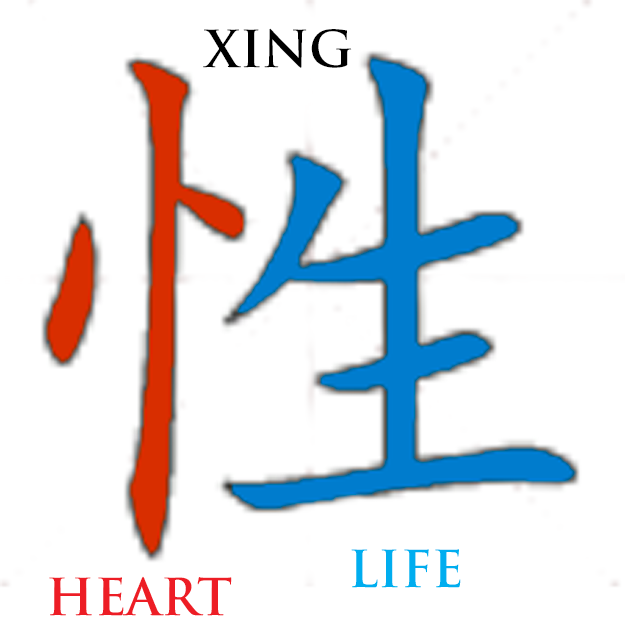
A deeper meaning to the words interprets Xing as the direction to which one’s heart is drawn. In fact, the character for Xing combines Heart and Life. The Ming is seen as the path through life created by this direction and has the meaning of a calling or vocation[5]. My fantasy about the University of Life fits with this interpretation and it is this meaning that I find most useful in working with clients who are struggling with chronic conditions or the problems of youth and old age.
When you are young, particularly in the teenage years, friends, media and parents pressure you to fit in with their world-view, which may conflict with your nature. Unless you can sense your Xing you can easily get lost without a sense of direction in life. The brain and its ability to think are not good guides to the Xing because they evolved to develop social relationships and to learn from culture. In contrast, the body is not concerned with other people and, by learning to listen to its subtle messages, you can sense the Xing. Essentially, if you are following your Xing then you feel fully alive in your body.
People with chronic conditions frequently spend an enormous amount of energy trying to find a cure which often doesn’t exist. But this means that they never meet the challenge of the condition and the lessons they can learn from it. On the other hand, if they embrace and value the issue then the difficulty can temper the soul and strengthen the spirit. A client with a brain tumour taught me how to work with the Xing. She had been told by her doctor that she probably only had a few months to live but the disease had kicked her into a state of aliveness she had never before experienced. She came to see me, not to try to cure the cancer but to “help her to stay fully alive for as long as she had left”.
Her main challenge was her fear which negated her feeling of aliveness. I first asked her to sense which parts of the body contracted in response to the fear. We explored how she could breathe into the organs which inflated that part of the body from inside, causing an authentic expansion. She soon learned to sense where she felt pain or fear and to use this breathing technique to expand rather than contract, so that she faced the difficulties of her condition with an open, positive posture. As a side effect of this, she reported that her friends stopped treating her as ill. In only a few sessions she found she could do without my support and I only saw her every two months or so. In the end she lived for another nine years, following her heart and seizing every opportunity for living to the full.
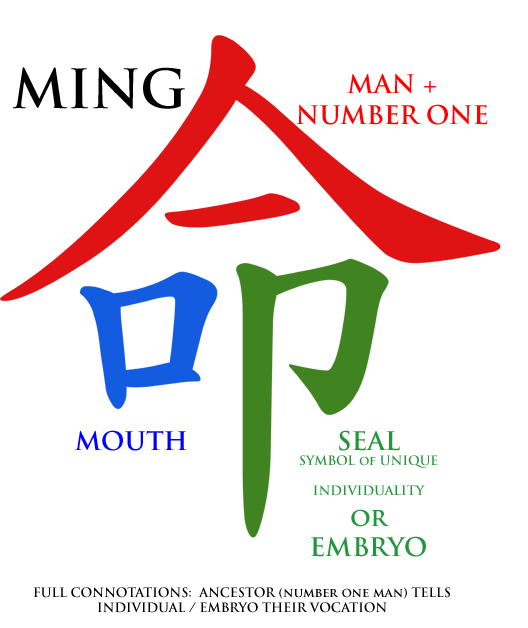
If you can reframe your problems as opportunities for development then you can look back at what you have learned and see the strengths and abilities that your condition has given you. If you learn to feel when you are on your heart-path, and meet any obstacles as lessons to be learned, then you gain a sense of life-purpose, which is the deeper meaning of Ming. This is shown in the Chinese character, which has the connotation of telling, calling or instructing an embryo what to do in its future life.
Whereas Xing can be sensed at any stage of life by noticing what makes you feel alive, Ming is usually not understood until later, when you look back and see the patterns that you have made with your life. Erik Eriksson characterized human development as a series of challenges that teach a capacity[6] and described the consequence of not learning that lesson. The challenge of old age is to embrace all the events of your life equally and thus make sense of your existence. Eriksson named this state ego-integration. Reframing your past behaviour and your present pains as lessons in the classroom of life is a good way of integrating the self. Old age is difficult because, inevitably, the body starts to deteriorate and, looking back on your life, there are often many things that you regret. If you can’t let go of your regrets and continue to yearn after your youthful abilities then the result, according to Eriksson, is despair.
But it’s difficult to let go of regrets. They refer to events that are past and can’t be changed. But you can reframe your view of them to have compassion for yourself. I find this self-compassion is easier to learn through the body and a good example is how you relate to your tense muscles. You can either treat them as a problem, trying to stretch them, complaining about them, getting massage to try to relax them. Alternatively, you could value them and praise them for their positive function.
One purpose of chronic muscle tension is protection; holding a vulnerable part of the body from moving. You can value this even if the protection is not needed any more. In this case you can consciously condense the muscle further rather than trying to loosen it. Unlike muscle release techniques like Sotai, this is not done as a way of tricking the muscle to relax, but as a way of saying to the muscle that you are going with it and valuing its past positive function. Once you learn this attitude to physical problems, you can more easily apply it to all those parts of yourself that you deplore so that you can value them as lessons which are part of your life-course. At this level, developing Xing and Ming resolves the state of dissatisfaction. They give meaning to life and reduce the pressure of the water in the bag we pictured before.
Everything is the Play of the Dharmakaya
There is an even deeper meaning to the words Xing and Ming that is almost impossible to describe in words. It underlies the philosophy and practice of Dzogchen (Tibetan for “Great Perfection”), which I studied with Chögyal Namkhai Norbu for many years. I only glimpse this deeper meaning, and what follows is my very limited understanding, but it comes from experience and not from received words.
Several physicists[7] and philosophers[8] suggest that consciousness is a fundamental part of the fabric of reality rather than a rare phenomenon that emerges from the complexity of a brain. Donald Hoffmann[9], in his book The Case Against Reality, describes experimental evidence that material reality is a construction of consciousness rather than something that consciousness passively perceives. He therefore suggests that instead of trying to understand how consciousness can emerge from matter, we see consciousness as fundamental. This does not mean, as the panpsychists believe, that everything is aware. Instead, he proposes that underlying reality is made of consciousness and that material things are perceptions created by this consciousness as a way of making sense of existence from a dualistic viewpoint. This is very similar to the view of reality held by the mystical branches of Buddhism and Taoism.
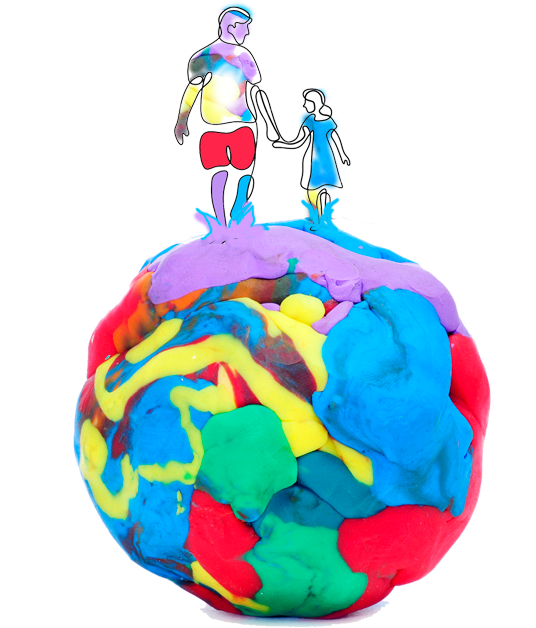
Imagine that the conscious universe is a ball of coloured plasticine with swirls and spirals of different colours. All the colours are experiences but, being a sphere, the universe cannot change or explore itself. To create change in the patterns, it needs to make an outgrowth – something partly separated from the whole. That outgrowth is an individual thing – maybe me or you. By living and relating with others, I twist the clay causing new patterns to appear in the colours. Then, when I die, the projection melts back into the universe and the new colour swirls are incorporated into the patterns of the universe .
Seen from this perspective, I am the universe, condensing into an individual in order to learn or even just to play. Namkhai Norbu, often quoted a Dzogchen saying: “All manifestation is the play of the Dharmakaya”[10]. The dharmakaya can be seen as the primal conscious universe, that separates and becomes individuals as part of its eternal urge to create. This is the deepest meaning of Ming. From the dualistic individual point of view, it is our vocation, but from the universal point of view, Ming is the creative intention of the universe. From this universal point of view there is no dissatisfaction, every manifestation is part of the play of the universe and, through play, it learns.[11].
[1] Rennie J (13 November 2017). “The Beautiful Intelligence of Bacteria and Other Microbes”. Quanta Magazine1
[2] Irmgard Schoegl. The Zen Way. The Zen Centre 1987
[3] Commentary on the Mirror for Compounding the Medicine: A Fourteenth-Century Work on Taoist Internal Alchemy)
[4] Commentary on the Shen Nong Bencao Jing, course notes from my studies in China.
5 XingMing – the Nature and Destiny of a Human Being – Elizabeth Rochat de la Vallée – TCM Academy
[6] Erikson E. H . (1982). The life cycle completed. New York: W.W. Norton & Company
[7] e.g. On the place of qualia in a relational universe by Lee Smolin, Perimeter Institute for Theoretical Physics
[8] e.g. Galileo’s Error by Philip Goff, Penguin RIDER
[9] e.g. The Case against Reality – Donald Hoffmann. Penguin 2019
[10],11 Dzogchen View of Tantric Ngöndro – A Teaching by Düdjom Rinpoche

